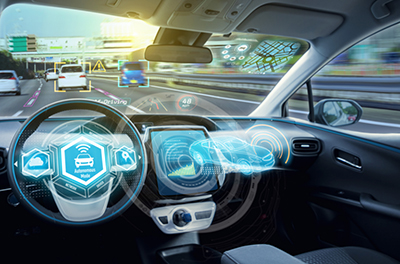How self-driving vehicles will transform OOH medium?
By M4G Bureau - June 30, 2020
Chief Strategy Officer, MediaCom, Howard Thompson explains how autonomous vehicles as the future of mobility will create media opportunities
China is confident to become the first and the largest market for self-driving vehicles. As well as revolutionizing personal mobility, autonomous vehicles – which, it is thought, will be adopted widely over the next decade – are set to usher in a new era of media consumption that is highly visual, immersive, intelligent and commerce-enabled. Self-driving vehicles stand as new consumer space.
 Advertising with more data, more touchpoints and more formats will enable an unprecedented level of micro-targeted marketing communications. OOH medium will get transformed from static mass media into a programmatic channel for targeted recommendations and offers. Vehicle sensors, eye tracking, facial recognition and AR technologies could work together to deliver personalized messages as consumers look out of the window, explains Howard Thompson, Chief Strategy Officer, Mediacom China.
Advertising with more data, more touchpoints and more formats will enable an unprecedented level of micro-targeted marketing communications. OOH medium will get transformed from static mass media into a programmatic channel for targeted recommendations and offers. Vehicle sensors, eye tracking, facial recognition and AR technologies could work together to deliver personalized messages as consumers look out of the window, explains Howard Thompson, Chief Strategy Officer, Mediacom China.
Head-free and hands-free self-driving vehicles will be able to realize the full potential of 5G connectivity, big data, artificial intelligence and augmented reality and virtual reality (AR/VR). This will result in a shift from horsepower to brainpower, from engine specs to intelligent experiences, as the key consideration in car buying. This in turn will create huge opportunities for media. McKinsey estimates that $5.5 billion will be generated in new global digital media revenues per year for every additional minute that a person spends on the mobile internet while in a car.
In-vehicle display indicates an exciting opportunity for highly targeted and contextually relevant reach media, whether that’s via individually operated DSPs (demand-side platforms) by each experience OS owner or via an aggregated ad-serving platform.
Content- Flexible cabin configurations used alongside AR, VR and improved audio technologies will expand the possibilities for brand storytelling as well as ensuring the optimal consumption experience. For instance, drinking the Chinese spirit baijiu – no longer taboo while in a vehicle – could trigger regional folk music and landscape scenery as well as a comfortably reclined seat and appropriate temperature control inside the vehicle.
Location-based recommendations- A vehicle, wearable device or phone mobility app could inform the passenger of a sale at a nearby favorite store, suggest purchasing tickets to an upcoming play as the vehicle drives past the theatre or pull up the menu and reviews for a new restaurant in the neighborhood before offering the option to make a reservation.
There is undoubtedly huge potential in this new “experience ecosystem” and media companies and marketers should take an active role in developing this area to make the most of the opportunity.

